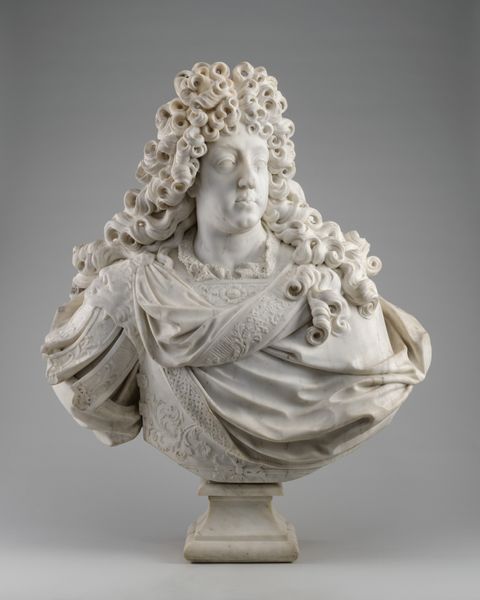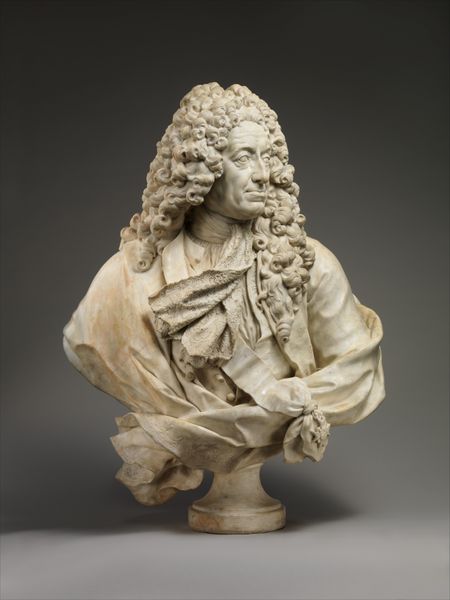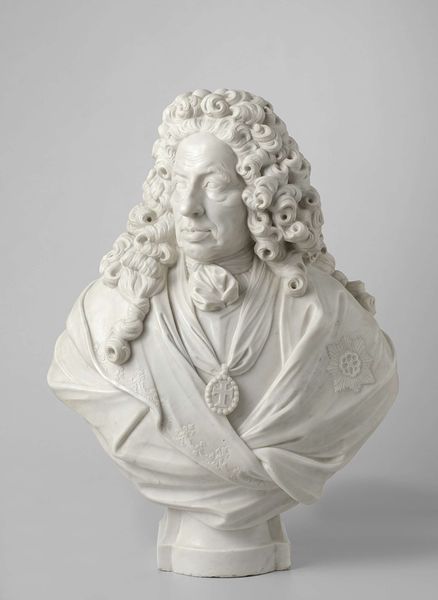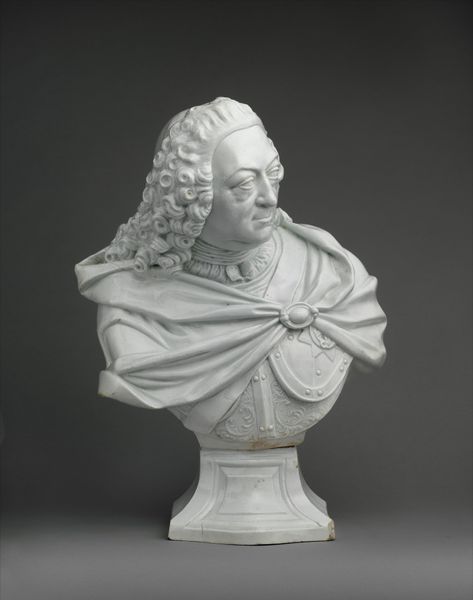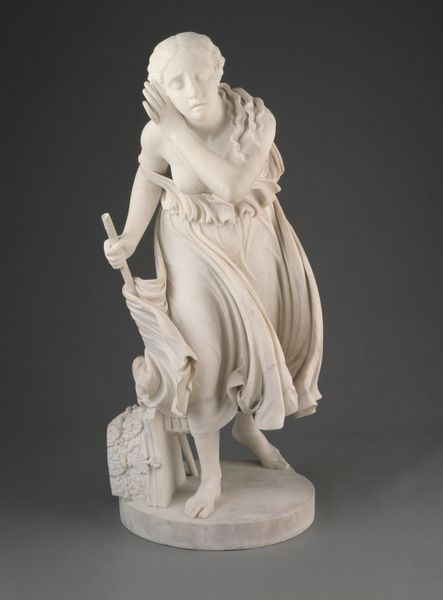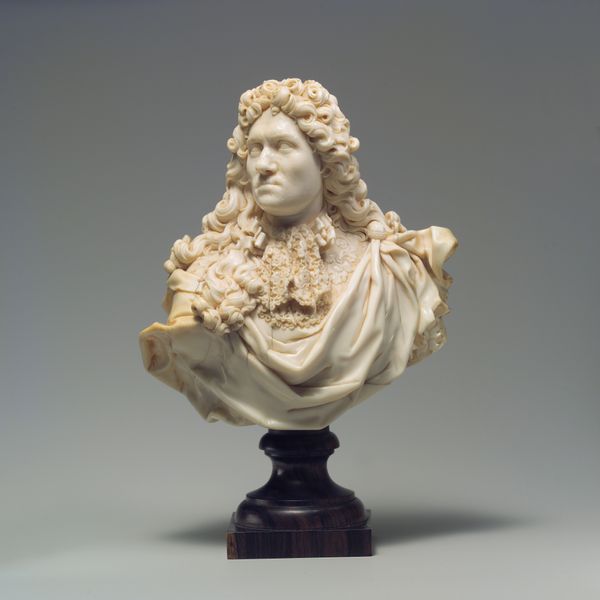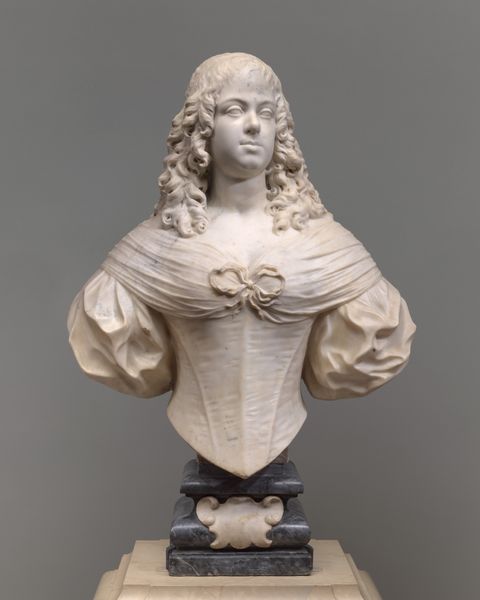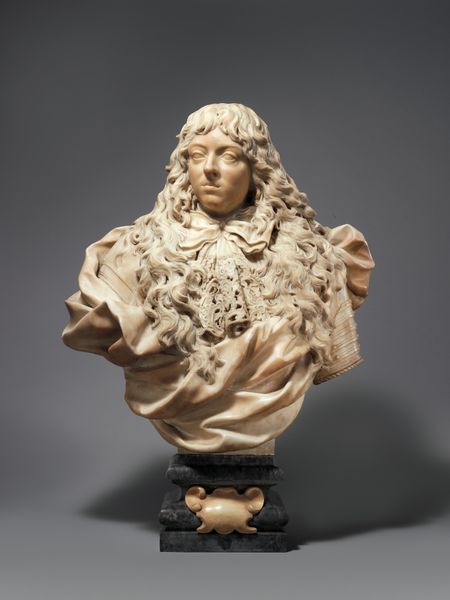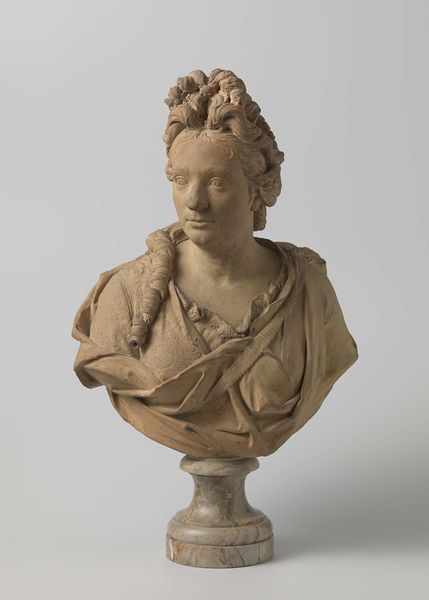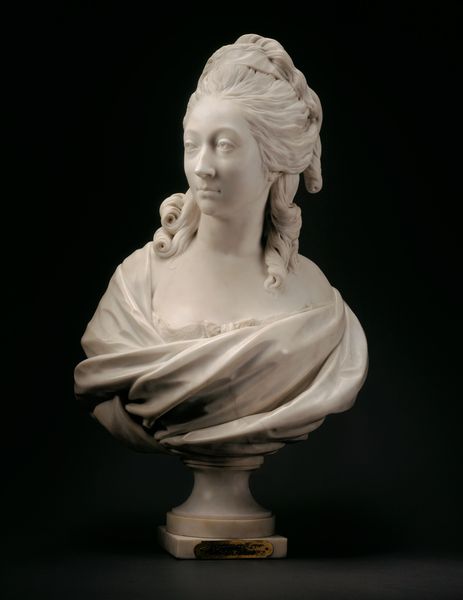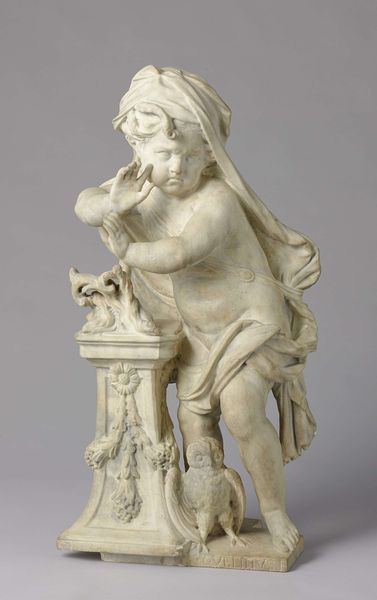
Bust of Johan van Welderen, Lord of Ubbergen, Valburg and Oudenhoorn (1660-1724) 1728
0:00
0:00
sculpture, marble
#
portrait
#
baroque
#
sculpture
#
sculpture
#
marble
Dimensions: height 87.5 cm, width 58 cm, depth 33.5 cm, weight 184 kg
Copyright: Rijks Museum: Open Domain
Curator: Here we have Jan Baptist Xavery's marble bust of Johan van Welderen, Lord of Ubbergen, Valburg and Oudenhoorn, dating from 1728. Editor: The first thing that strikes me is its immaculateness. It's almost unsettlingly pristine. There is something intensely staged about its whiteness that speaks to an elevated station. Curator: Indeed, Xavery's mastery of marble is remarkable here. Notice the intricate detail in the cascading curls of the wig, achieved with tremendous skill. The interplay of light and shadow creates a vibrant, almost life-like texture. The Baroque period often employed such grandeur. Editor: Of course, a sculpture like this served to cement social hierarchy. It makes one wonder how such artistic prowess can be harnessed to create art that does not primarily function as glorification, and isn't primarily used to commemorate individuals already cemented in privilege. Van Welderen would certainly have been a part of the Dutch elite at the time, right? Curator: Precisely. The work showcases the prevailing aesthetic values of the period while subtly referencing van Welderen's status as a powerful landowner and statesman through idealized, classically inspired features. You will notice, for instance, that he appears younger, more imposing. The slight turn of the head captures his gaze. Editor: And perhaps a sanitized history? We do see so little that could speak to struggle or suffering. This is a very one-sided commemoration of a man. And these stylized flourishes, the robes draped like a Roman Emperor... I wonder if Xavery questioned these values when taking this commission, and who would have had the agency to suggest alternative avenues? Curator: Those stylized details contributed to the overall elegance. By manipulating classical references with incredible talent, Xavery made this artwork speak directly to that Baroque era’s reverence for form and representation. We should always also be aware of the artistry on display and the ways these pieces influenced culture in Europe, the US, and even throughout the Global South as new styles spread through colonization. Editor: Absolutely. Examining the historical and political context, however, is important in revealing which narratives have traditionally dominated and who was actively silenced during Xavery’s time and beyond. Art doesn't exist in a vacuum. Curator: No, it certainly doesn't. Appreciating it, however, comes through considering every aesthetic choice visible here, to unlock potential readings through close study. Editor: By acknowledging the embedded biases in this, we can at least better understand our present.
Comments
No comments
Be the first to comment and join the conversation on the ultimate creative platform.
